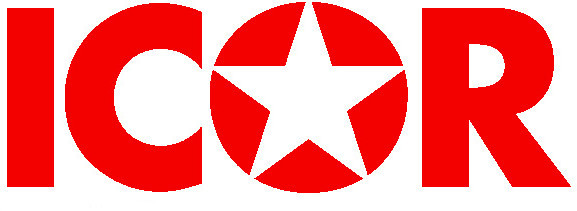On 2014 Lok Sabha Election Results
The results of the protracted Lok Sabha elections in nine phases, which concluded on 12th May, announced on 16th May surprised even the staunchest advocates of the RSS Parivar. It surpassed even the most optimistic results predicted in favor of BJP and NDA by almost all the opinion polls earlier and the exit polls on 12th May. Only two insignificant, little known TV Channels, News 24 and Today’s Chanakya had announced that the NDA tally may reach 340. But they also predicted 57 seats for Congress and 70 seats for UPA. The maximum NDA tally predicted by leading channels like Times Now, CNN-IBN-CNDS, NDTV did not go above 279. These exit polls were not taken for granted even by the BJP. That is why many of its leaders were talking about post-poll tie-ups with some of the regional parties even on 15th May. They were not confident of getting majority for NDA alone, leave alone for BJP.
But what really happened when the results were announced surprised all. Not only NDA tally reached 336, but BJP alone got clear majority, 284 seats, in the LS, though its vote tally is only 31%. Congress was decimated to 44, a number which even its bitter critics had ever dared to predict. Almost all the parties which were part of UPA or supporting the UPA government from outside got badly decimated. While the DMK in TN, BSP, NC in J&K could not win a single seat, the SP, RJD like forces were severely mauled. If the official Left led by CPI (M) which was part of the UPA from 2004 to 09 with 64 seats, had suffered a major defeat in 2009 elections with its strength reduced to 24, this time it was further decimated to 12, with RSP and Forward Bloc failing to open account, CPI getting only one seat and CPI(M) getting only 11 including two independents it had supported in Kerala. How did this BJP-NDA tsunami led by Narendra Modi happen? Is it due to a Modi- wave as his supporters claim? Or, even if a Modi-wave really swept across most of the country as his supporters claim, what were the reasons for it?
One reason generally repeated is the money power and the open support provided by the Corporate houses including the open support from the powerful electronic and print media controlled by corporates which helped the BJP. The way these corporate forces tried to replace Manmohan Singh who was deployed by the IMF-World Bank duo in 1991 to launch the imperialist globalization policies through a neo-liberal raj and who had served the corporate houses well for a decade with Modi and his Gujarat Model which calls for further opening of the country to international capital-market forces and to promote the corporate houses to more commanding positions should not surprise anyone who seriously analyze the Indian political scene and the way the bourgeois parliamentary system functions. From the 1960s itself the ruling classes, the big business- big landlord classes supported by imperialists, were trying to turn India in to a two party ruling system like Britain. So when the decade long UPA regime was immensely discredited due to unprecedented price rise, unemployment, corruption etc it is natural that the ruling forces replaced it with Modi regime which shall speed up the neo-liberal policies. At the same time they wanted to keep away any discussion on the neo-liberal raj which promote the present ‘development model’ which has impoverished the masses and devastated the country, and on the Gujerat Model of Modi which is not at all different from the Manmohanomics, instead a more aggressive model based on it. Under bourgeois parliamentary system such replacements serve as safety valves to maintain the system.
The comprador ruling classes in the country, the corporate- big landlord- bureaucrat nexus, have their own agenda and they want to pursue it with more ferocity by changing the parties or coalitions leading the government, when they get exposed. For this, the whole election was turned in to a presidential form of debate by Modi, Rahul, Kejriwal like forces at national level and by the various regional satraps at state level, all of them competing with each other not to bring the neo-liberal policies in to the centre of discussion, but to divert the debate away from them. The corporate media played a major role in this by projecting peripheral issues, like personal details of leaders, allegations/counter allegations and various forms of mudslinging. The whole campaign was reduced to projection of individuals/leaders and the welfare packages they have implemented or propose to implement. In this way the major contestants from Congress, BJP to the regional parties, to the official left led by CPI(M) succeeded to keep any in-depth discussion on the neo-liberal regime and the development model based on it implemented by them wherever and whenever they were/ are in power. It was a well calculated general agenda put forward in a planned way by the ruling system through the corporate media and other agencies. The central idea was to establish that there is no other alternative possible to the ruling system, and the ruling ideas. Once this was successfully established it was easy to project Modi as the savior, the best alternative who will solve all the problems faced by the people and the country.
The post-1991 experience, especially the last decade of UPA rule, have proved that the central focus of a people oriented politics should be to overthrow the neo-colonial slavery intensified by the neo-liberal policies, replacing it with a fundamentally different people oriented development paradigm. As the last decade of UPA rule had led to unprecedented price rise, unemployment, corruption and increasing autocracy, against this people’s anger had reached extreme levels. It was manifested through many people’s upsurges against corruption, attacks on women, displacements for neo-liberal projects, increasing mafia rule etc. People were very angry and they wanted a ‘change’. The unexpected victory reaped by BJP and NDA is due to the fact that they along with the corporate media through their vigorous, well-calculated and well-oiled campaign, always keeping any discussions about the neo-liberal policies safely away, could project Modi as the harbinger of this much needed change.
Another important reason for the victory of Modi campaign is that the very same forces who were claiming to advocate secularism helped him to indulge in outright Hindutua campaign. During the election campaign Modi was targeted for the 2002 Gujarat genocide by all his opponents. By doing so, they were trying to polarize the Muslim votes to their side, instead of advocating separation of religion from politics. This helped Modi to openly call for a ‘Hindu’ polarization from hundreds of his meetings and to realize it in UP, Bihar, Maharashtra and all other states. It was so powerful that it swept away even the caste based vote banks of BSP, SP, RJD, JD(U), JD(S) like parties in a big way. The emergence of a number of Muslim parties like Muslim League, SDPI, Welfare Party, Muslim Majlis etc in large number of seats at all India level openly calling for a Muslim polarization, was openly used by Modi to campaign for Hindu polarization. Secularism was reduced to communal appeasement right from 1950s under the banner of ‘Sarva Dharma Samabhavana’ to help vote bank politics by all ruling class parties which call themselves secular. The Modi campaign used it as a license for Hindu polarization with ferocity, ignoring the ‘moral code of conduct’ put forward by the Election Commission with immunity. Thus, in short, it was the immense money power, all out support of the corporate media which helped to divert the attention from any serious discussion on the neo-liberal policies which devastate the people’s life to peripheral issues, vehement projection of Modi as the savior by them before the people who were extremely angry against the UPA regime, and the successful Hindu polarization beating back the caste based vote banks in dominance from the time of Mondal Commission Report made the big BJP- NDA victory possible. None of the main stream parties including the CPI(M) led official left who had varying levels of money power and media support could effectively challenge this Modi campaign.
While this pro- BJP/NDA wave utilizing the anti-Congress anger among the people swept through most of the states, the exceptions to it in TN, Odisha, W.Bengal, Telengana, Kerala and Punjab have to be studied separately taking the specificities of these areas. Though the regional parties won handsomely in TN, Odisha, W. Bengal and Telengana , Congress led UDF in Kerala or BJP lost all seats in Punjab, in all these states BJP’s vote share went up significantly at the expense of Congress, regional parties and CPI(M) led LF. In W. Bengal at the expense of CPI(M).
As far as the Maoists who called for boycott of election as usual is concerned, its bankruptcy was exposed with 63% voting in its so-called most powerful base, Dantewada in Chhattisgarh, more than 75% in Chindwada in Maharashtra and 80% in Jangal Mahal of WB and similar high percentage of voting in other districts of Jharkhand, Bihar and Odisha with Maoist presence. Another rebuff to these anarchist forces was that reflecting the growing democratization of the people more than 65 lakhs of people voted for NOTA ( None Of The Above). Both the right opportunist and anarchist trends of the communist movement have ultimately served the ruling system in the present rightward turn.
A cursory glance through the political developments during the last 67 years after the 1947 transfer of power show that, after the 1952 first general election there were many zigzags in Indian political history. By the time of fourth general elections in 1967, the Congress was weakened and it lost power in many states. In 1977 elections for the first time Congress was voted out of power as a backlash against its emergency rule. In 1980 when it came back to power, it had started opening the country to IMF- World Bank duo. In 1984, after assassination of Indira Gandhi, Congress regained power with a 400 plus win, but was defeated in next elections in 1989 following many corruption charges. After 1991 elections its minority government could impose the neo-liberal policies as the opposition refused to unite to vote against it. Though Congress lost in next elections in 1996, it could foist two non-BJP UF governments and push forward its imperialist globalization policies. The worsening of people’s life under these governments led to BJP led NDA coming to power in 1998 and again in 1999, pushing forward its India Shining neo-liberal regime in more aggressive form. But it was exposed soon and in 2004 elections BJP was unseated, Congress could form the UPA government with the support of LF to pursue the neo-liberal raj with new slogans. In next elections Congress improved its position and continued the UPA rule without LF. During this period, speeding up of the neo-liberal regime, severely estranged the UPA rule from the people leading to present victory for BJP and its NDA by getting just 31% vote share in a fractured polity. The important thing to be observed when BJP is going to wield power with clear majority in the LS is that the Indian polity which was turning to rightist positions continuously for long has taken an ultra rightist turn; conditions are prepared for implementation of the RSS agenda at all levels. As all the main stream parties including the official left led by CPI(M) are supporting the implementation of the neo-liberal policies, conditions are favoring the Modi rule to push them forward more aggressively by using this consensus as a cover. The Modi rule is going to speed up saffronization of all fields. The communal appeasement and caste based approach of Congress and regional parties is creating favorable conditions for Modi government to speed up its agenda. So there is a real danger of an ultra rightist offensive by the RSS Parivar.
In the numerous analyses of the pre-election situation and in its Election Manifesto the CPI(ML) had repeatedly pointed about the possibility of this danger. Based on this analysis it had called for polarization of the revolutionary left and democratic forces against the neo-liberal raj and for an alternative people oriented development model and for democratization of the polity. In spite of its repeated calls such an effective polarization could not be realized. Still it could field 52 candidates and support 20 candidates based on common agenda. An effective campaign also could be waged in spite of serious organizational and financial constraints. But the election results have proved that a much more vigorous offensive is required to challenge the ultras rightist moves of the Modi regime. So the CPI(ML) once again appeals to all revolutionary left forces to learn lessons from the election results and to come closer to build a powerful people’s movement at all India level by uniting all democratic forces based on an anti-neo-liberal platform.
Document Actions




